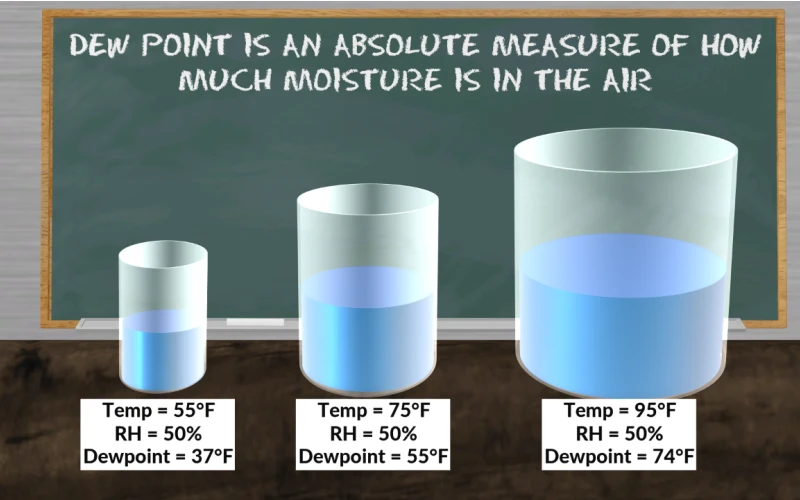
# High Dew Point and Its Impact on Weather Conditions
## Understanding Dew Point
The dew point is the temperature at which air becomes saturated with water vapor, leading to the formation of dew, fog, or clouds. When we talk about a high dew point, we’re referring to conditions where the air contains a significant amount of moisture, making it feel more humid and uncomfortable.
## What Constitutes a High Dew Point?
Meteorologists generally consider dew points above 65°F (18°C) to be high, with the following classifications:
– 55-65°F (13-18°C): Comfortable
– 65-70°F (18-21°C): Somewhat uncomfortable
– 70-75°F (21-24°C): Very humid and quite uncomfortable
– Above 75°F (24°C): Extremely oppressive and potentially dangerous
## Effects of High Dew Points on Weather
### Increased Humidity
High dew points directly correlate with high relative humidity. When the dew point is close to the actual air temperature, the relative humidity approaches 100%, making the air feel muggy and sticky.
### Reduced Visibility
Persistent high dew points can lead to the formation of fog, especially in the early morning hours when temperatures typically reach their lowest point of the day.
### Enhanced Precipitation Potential
Air with high dew points contains more moisture, which can lead to more intense rainfall when weather systems trigger precipitation. This is particularly important for thunderstorm development.
### Heat Index Considerations
High dew points combined with high temperatures create dangerous heat index values. The body’s ability to cool itself through sweat evaporation is significantly reduced when the air is already saturated with moisture.
## Regional Variations
Areas near large bodies of water or in tropical climates typically experience higher dew points more frequently. Coastal regions often have dew points in the 70s°F (20s°C) during summer months, while arid regions might rarely see dew points above 60°F (16°C).
## Measuring and Forecasting Dew Points
Modern weather stations measure dew point directly using specialized hygrometers. Forecast models use dew point data to predict:
– Potential for fog formation
– Minimum overnight temperatures
– Thunderstorm development
– Heat stress conditions
## Health and Safety Implications
High dew points can be particularly dangerous for:
– Outdoor workers
– Athletes
– Elderly individuals
– Those with respiratory conditions
It’s important to stay hydrated and limit strenuous outdoor activities when dew points are exceptionally high.
## Conclusion
Understanding high dew points is crucial for interpreting weather forecasts and preparing for potentially uncomfortable or dangerous conditions. By paying attention to dew point values along with temperature, we gain a more complete picture of how the weather will actually feel and what impacts it may have on our daily activities and health.
Keyword: high dew point